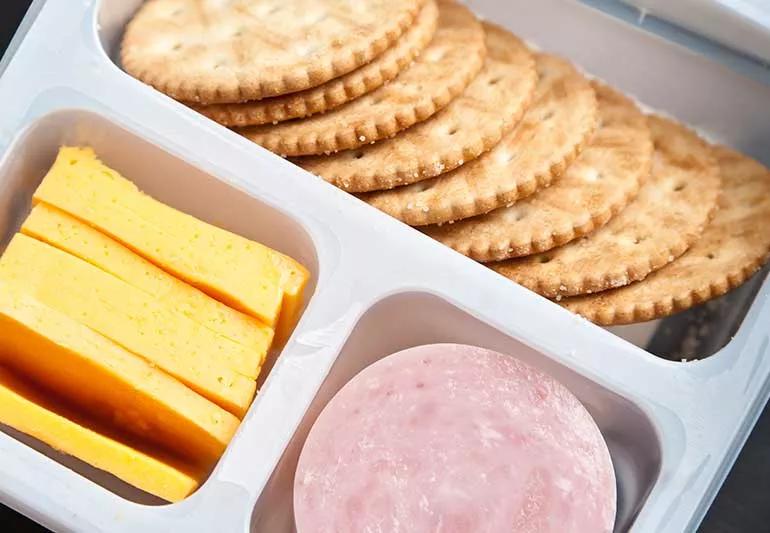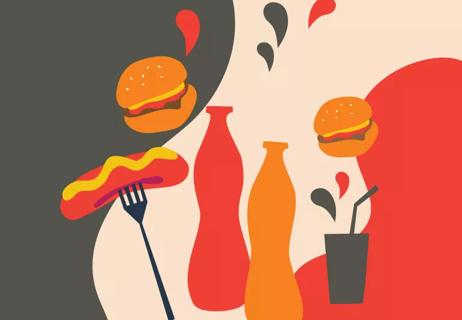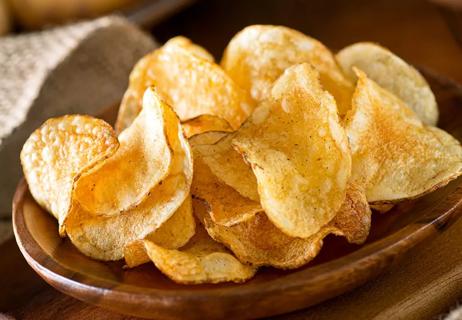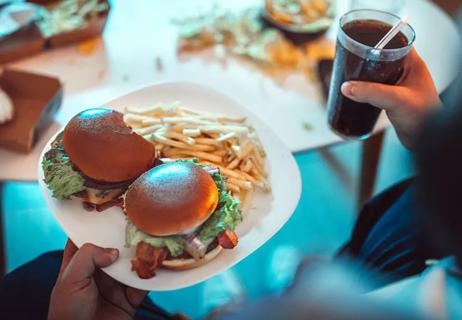They’ve been altered to include fats, starches, sugars and hydrogenated oils

Have you ever heard the advice that you should buy most of your groceries from the outer aisles of the store, instead of stocking up on foods from the inner aisles? That’s because the outer aisles are packed full of whole and minimally processed foods — the stuff you know is healthy, like fruits, veggies, lean meats and fish.
Advertisement
Cleveland Clinic is a non-profit academic medical center. Advertising on our site helps support our mission. We do not endorse non-Cleveland Clinic products or services. Policy
While healthy choices can be found in those inner aisles, too (lookin’ at you, whole grains!), they’re also where you’ll find lots and lots of ultra-processed foods. But what are ultra-processed foods? Why do they matter? And importantly, what do they do to your body?
Registered dietitian Beth Czerwony, RD, LD, explains what ultra-processed foods are and what they do — and why it’s so important to embrace their counterparts, known as whole and minimally processed foods.
Think of ultra-processed foods like Frankenstein’s monster: Changed by science until they’re almost unrecognizable from their original form.
Ultra-processed foods (sometimes called highly processed foods) are foods that have been altered to include fats, starches, sugars, salts and hydrogenated oils extracted from other foods. They’re a patchwork of ingredients, additives and preservatives.
All of these additions add taste and flavor, which makes you want to keep coming back for more. They also make ultra-processed foods shelf-stable, which means they last longer in your pantry before expiring or going bad.
And importantly, they also have negative health implications. “Those extra, modified ingredients can lead to a variety of health conditions,” Czerwony says.
Advertisement
Just because a food is processed doesn’t necessarily mean it’s unhealthy. You know how all squares are rectangles, but not all rectangles are squares? It’s kind of like that.
“‘Processed’ just means anything that you do to the food itself that changes it from its original form,” Czerwony explains.
Ultra-processed foods, then, are one category within a larger umbrella of processed foods. And the more processed a food is, the more health risks it poses.
It’s worth reiterating: A food isn’t automatically bad for you just because it’s processed in some way — which is the case with minimally processed foods.
“Minimally processed foods are those with added vitamins or minerals, maybe a little bit of sugar,” Czerwony says. Examples include:
And many of these foods can be part of a healthy diet, especially if you’re on a tight budget. So, what’s the line between minimally processed and ultra-processed?
Ultra-processed foods take it a few steps further. Instead of just adding vitamins and minerals, these products also include added ingredients that significantly change the makeup of the original food.
“Ultra-processed foods are foods that have not only been processed, but have also had other substances — like salt, sugar, fat, preservatives and food dyes — added to them for flavor and to make them shelf-stable,” Czerwony explains.
Some examples of ultra-processed foods are:
So, what’s the big deal? Why does it matter whether you eat ultra-processed foods?
“The added sugar, fat and salt in these foods mean they have more calories than whole and minimally processed foods,” Czerwony states. “These added ingredients also cause inflammation inside the body, which is directly correlated with developing a variety of diseases.”
Ultra-processed foods raise your risk of:
But of course, there’s a reason people eat ultra-processed foods to begin with. They pack a double-whammy: They’re tasty and they’re convenient. It’s all too easy to grab a bag of chips or heat up a frozen dinner when you’re busy or on the go. Plus, ultra-processed foods are actually formulated to make you want to eat more of them.
“Food manufacturers add salt, sugar, fats and other ingredients for shelf stability, but also for flavor enhancement,” Czerwony notes. “You end up wanting to eat more and more of them — and wanting to eat them more often — instead of opting for healthier options.”
Advertisement
As you try to cut back on or eliminate ultra-processed foods, focus on choosing whole and minimally processed foods.
“Eating more plant-based foods, fruits, vegetables, whole foods, overall, is going to increase your chances of having a healthy life,” Czerwony encourages.
She explains how to start making food choices that will help you steer clear of all things ultra-processed (or at least scale back).
When you’re grocery shopping, always check nutrition and ingredient labels, and read them closely. Try to avoid common food additives and preservatives like:
“All of these ingredients indicate that something has been added to the ingredients to add both stability and sweetness,” Czerwony says.
Start by making small swaps. Adding more whole foods to your diet can balance out the ultra-processed foods that you’re struggling to cut.
If, for example, you’re accustomed to using one type of ultra-processed food in your cooking, try to balance it out by adding in more whole or minimally processed foods (whole grains, fruits and vegetables, etc.)
Advertisement
“It doesn’t have to be all or nothing,” Czerwony says, “and this will help you start to find a better balance.”
Avoiding ultra-processed food doesn’t mean you can never eat a chicken nugget or enjoy a cookie again. But to keep things as healthy as possible, Czerwony recommends learning to make your own.
“You’re better off learning different cooking techniques and modifying recipes, like changing the amount of sugar or salt a recipe calls for,” she suggests.
Here are some examples of at-home swaps for ultra-processed favorites:
“You can still have something similar to your favorite foods,” Czerwony says, “but ultimately, they’re going to be healthier.”
Unless you’re extremely regimented and have mastered the art of meal prep, it can be difficult to cut out ultra-processed foods altogether. But a little bit goes a long way, and starting small can ultimately lead to big changes for your health.
“The reality is that these foods are extremely convenient in our busy lives,” Czerwony acknowledges. “But by cooking at home, modifying recipes and learning how to take in less fat and sugar, you can learn to achieve a more balanced diet.”
Advertisement
Learn more about our editorial process.
Advertisement

They’re full of calories and sometimes trans fats, which contribute to stomach issues, inflammation and a higher risk of having obesity and heart disease

This synthetic food dye must be removed from all foods by 2027 and from all medications by 2028 for health concerns

WARNING: Bacteria could be present due to raw flour and eggs

From your mood to your heart and your gut

From rice cakes to veggie straws, their answers may surprise you

Practical tips for curbing cravings and smart swaps

Popular candy contains potassium-lowering compound

Understanding sugar’s connection to heart disease

The best parenting style balances enforcing rules and showing plenty of love

Tips include cutting back on sugar, focusing on exercise and managing stress

It can be harder to let go when you’ve invested time, energy and emotions — but it might be the healthier choice long term